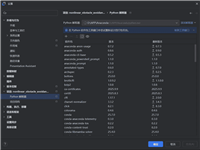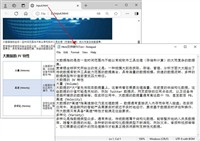typing 模块是现代python编程中一个极其重要的部分。如果你想写出健壮、可维护、易于理解的代码,那么掌握它至关重要。
什么是typing模块?
typing 模块是python 类型提示 (type hinting) 系统的核心。它在 python 3.5 版本被正式引入,允许开发者在代码中标注变量、函数参数和返回值的预期类型。
核心思想: python 本身仍然是一门动态类型语言(在运行时才确定变量类型)。typing 模块并不会改变这一点。它提供的是一种“提示”或“注解”,主要服务于以下三个方面:
- 静态类型检查工具 (static type checkers):像
mypy这样的工具可以像编译器一样提前扫描你的代码,根据类型提示找出潜在的类型错误,从而在运行前发现 bug。 - 集成开发环境 (ide):像 pycharm 这样的 ide 会利用这些提示来提供更智能、更精确的代码补全、错误高亮和代码导航。
- 代码可读性和可维护性:它让代码变得“自文档化”,任何人(包括未来的你)都能快速理解函数应该接收什么样的数据,以及会返回什么样的数据。
如何使用?常见类型提示介绍
从 typing 模块中导入这些类型来使用它们。
1. 基础集合类型 (collections)
这是最常用的部分,用于描述列表、字典等容器内部的数据类型。
list: 表示列表。
from typing import list # 一个只包含字符串的列表 names: list[str] = ["alice", "bob", "charlie"] # 一个只包含整数的列表 primes: list[int] = [2, 3, 5, 7]
dict: 表示字典,需要同时指定键 (key) 和值 (value) 的类型。
from typing import dict
# 一个键为字符串、值为浮点数的字典
item_prices: dict[str, float] = {"apple": 0.75, "banana": 1.25}tuple: 表示元组。
如果元组中每个元素的类型都一样,且长度可变:
from typing import tuple # 一个包含任意数量整数的元组 coords: tuple[int, ...] = (1, 2, 3)
如果元组长度固定,且每个元素类型不同(更常见):
from typing import tuple
# 一个包含姓名(str)、年龄(int)、是否会员(bool)的元组
user_profile: tuple[str, int, bool] = ("alice", 30, true)set: 表示集合。
from typing import set
# 一个只包含整数的集合
unique_ids: set[int] = {101, 102, 103}现代语法 (python 3.9+)
从 python 3.9 开始,可以直接使用内置的 list, dict, tuple, set 来进行类型提示,代码更简洁:
# python 3.9+
names: list[str] = ["alice", "bob"]
item_prices: dict[str, float] = {"apple": 0.75}但你仍然需要了解 typing 模块,因为它提供了更多高级类型。
2. 特殊类型 (special types)
这些类型用于处理更复杂的场景。
optional[t]: 表示一个值可以是 t 类型,也可以是 none。
这在函数参数有默认值 none 时非常常用。
from typing import optional
def greet(name: optional[str] = none):
if name:
print(f"hello, {name}!")
else:
print("hello, world!")
greet("alice") # 正确
greet() # 正确optional[str] 本质上是 union[str, none] 的简写。
union[t1, t2, ...]: 表示一个值可以是多种类型中的任意一种。
from typing import union # 一个 id 可以是整数或字符串 user_id: union[int, str] = "user-123" user_id = 404
any: 表示任何类型。
这是一个“逃生舱”,当你实在不知道或者不关心某个变量的类型时可以使用它。但应尽量避免使用,因为它会让你失去类型检查带来的所有好处。
from typing import any
def process_anything(data: any):
# 在这里,ide和类型检查器对 data 一无所知
print(data)callable: 用于注解函数或可调用对象。
语法是 callable[[参数类型列表], 返回值类型]。
from typing import callable
# 定义一个函数,它接受一个整数,返回一个字符串
def format_id(user_id: int) -> str:
return f"user-{user_id}"
# processor 变量应该是一个可调用对象,其签名与 format_id 匹配
processor: callable[[int], str] = format_id函数中的类型提示
这是类型提示最常见的应用场景,使用 -> 来注解函数的返回值类型。
from typing import list, dict, optional
class item:
def __init__(self, name: str, price: float):
self.name = name
self.price = price
# 这个函数的签名清晰地告诉我们:
# - 它接受一个由 item 对象组成的列表
# - 它返回一个浮点数
def calculate_total(items: list[item]) -> float:
total = 0.0
for item in items:
total += item.price
return total
# 示例
shopping_cart = [item("apple", 0.75), item("banana", 1.25)]
total_cost = calculate_total(shopping_cart)
print(f"total cost: {total_cost}") # total cost: 2.0总结
typing 模块是 python 从脚本语言向工程化语言迈进的重要一步。开始在你的代码中使用它,你会发现:
- bug 更少了:很多低级错误在编码阶段就被 ide 和静态检查器发现了。
- 代码更好懂了:不再需要去猜测函数的参数和返回值是什么。
- 重构更安全了:ide 可以更自信地帮你修改代码。
- 与现代框架(如 fastapi)的集成更顺畅了。
它是一项投入少量时间学习,却能长期获得巨大回报的技能。
到此这篇关于python的typing模块:类型提示 (type hinting)的文章就介绍到这了,更多相关python typing模块内容请搜索代码网以前的文章或继续浏览下面的相关文章希望大家以后多多支持代码网!






发表评论